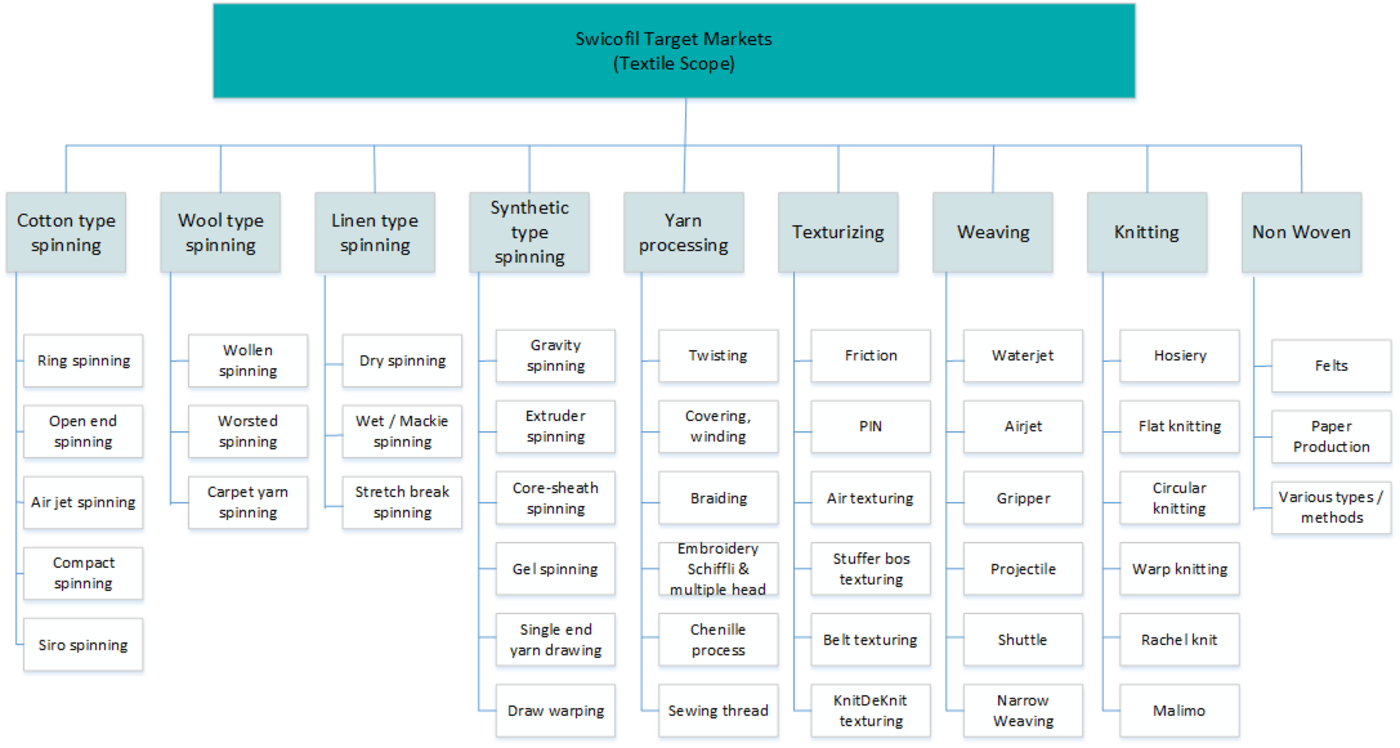Our yarn and fiber range covers all fields from the finest ladies pantyhose to the coarsest heavy duty application.
An oversight what all in included in the textile scope:
TEXTILE MARKETS
Can't find your application? Check out our core market website where Swicofil focuses on seven main categories:
BASIC SPINNING PROCESS
Prior to the Industrial Revolution, textiles were spun by hand using a spinning wheel. Today most commercial yarns are produced in textile spinning mills. Although the tools and techniques vary from hand spinning, most of the processes are still the same. Industrial yarn spinning includes four basic processes in order to manufacture yarn from the raw materials.
Fibers will go through the following processes:
Most yarns are spun from staple fibers made using one of three of systems- the Cotton Process, the Woolen Process, and the Worsted Process. These processes vary only slightly from each other and they all included the basic steps of Loosening and Cleaning, Carding, Drawing and Spinning.
Fibers will go through the following processes:
- loosening & cleaning
- carding
- drawing
- spinning
Most yarns are spun from staple fibers made using one of three of systems- the Cotton Process, the Woolen Process, and the Worsted Process. These processes vary only slightly from each other and they all included the basic steps of Loosening and Cleaning, Carding, Drawing and Spinning.

